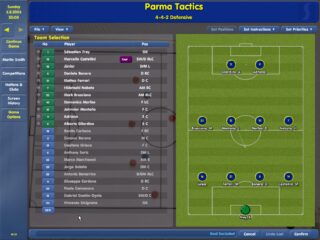Football computer games in the 1980s and 1990s evolved from simple text-based simulations into fully animated and deeply immersive experiences, reflecting the growing sophistication of home computers and gaming consoles. The roots of the genre can be traced back to Football Manager, released in 1982 for the ZX Spectrum and later ported to various systems, including the Commodore 64. This early title, designed by Kevin Toms, was a text-driven simulation that let players manage a football club, making decisions on tactics, formations, and transfers, and watching the match outcomes unfold through simple graphics. It laid the foundation for an entire subgenre of sports management games.
By the late 1980s, arcade-style football games had begun to flourish. One of the most influential titles of the era was Kick Off, developed by Dino Dini and published by Anco in 1989 for the Atari ST and Amiga. Its top-down view and fast, responsive gameplay made it stand out immediately, but it was Kick Off 2, released in 1990, that truly defined the series. With improved AI, tactical options, and the introduction of league and tournament modes, it became a competitive favorite and a staple of multiplayer gaming on the Amiga.
Then, in 1992, Sensible Soccer arrived and changed everything again. Developed by Sensible Software, the game combined intuitive controls with a zoomed-out perspective that allowed players to see much more of the pitch. It was not just fun but accessible, with its smooth animations and responsive handling quickly winning over fans. That same year, Championship Manager debuted as a much more detailed and stats-heavy management simulation, created by the Collyer brothers. While its interface was minimal, its depth and realism made it a favorite among fans of strategy and long-term gameplay.
Around the same period, EA Sports entered the scene with FIFA International Soccer, released in 1993. Its isometric viewpoint and licensed player names set new standards for presentation and realism, starting a franchise that would dominate football gaming in the decades to come.
Meanwhile, management games evolved with Player Manager 2 offering a hybrid experience that combined tactical oversight with the ability to play matches directly. But perhaps the most celebrated fusion of arcade football and management was Sensible World of Soccer, released in 1994. It retained the fast-paced gameplay of Sensible Soccer but added a massive career mode with real-world teams, transfers, and player statistics. It remains a landmark title, remembered for its perfect balance of action and strategy.
The football games of the 80s and 90s were more than just sports simulations—they were expressions of the era’s creativity and technical innovation. From text-driven management to fast arcade action, they set the template for everything that came after.














